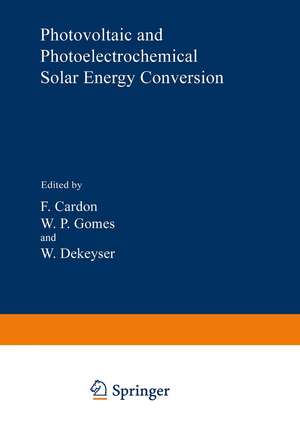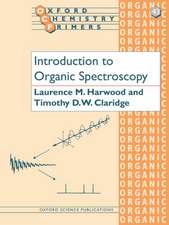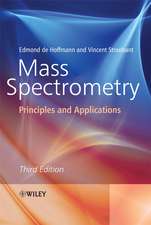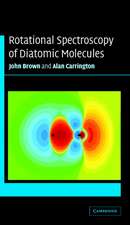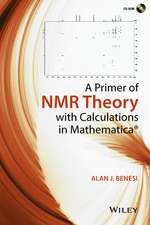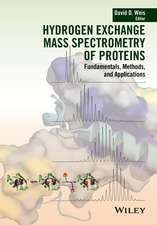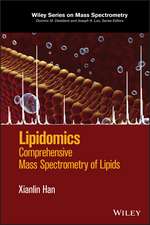Photovoltaic and Photoelectrochemical Solar Energy Conversion: NATO Science Series B:, cartea 69
Editat de F. Cardonen Limba Engleză Paperback – oct 2012
Din seria NATO Science Series B:
- 5%
 Preț: 375.70 lei
Preț: 375.70 lei - 5%
 Preț: 369.29 lei
Preț: 369.29 lei - 5%
 Preț: 720.84 lei
Preț: 720.84 lei - 18%
 Preț: 1406.03 lei
Preț: 1406.03 lei - 5%
 Preț: 373.33 lei
Preț: 373.33 lei - 5%
 Preț: 723.78 lei
Preț: 723.78 lei -
 Preț: 391.79 lei
Preț: 391.79 lei - 5%
 Preț: 1445.00 lei
Preț: 1445.00 lei - 5%
 Preț: 380.61 lei
Preț: 380.61 lei - 5%
 Preț: 1103.75 lei
Preț: 1103.75 lei - 5%
 Preț: 711.72 lei
Preț: 711.72 lei - 5%
 Preț: 1414.08 lei
Preț: 1414.08 lei - 18%
 Preț: 957.44 lei
Preț: 957.44 lei - 5%
 Preț: 723.21 lei
Preț: 723.21 lei - 5%
 Preț: 727.44 lei
Preț: 727.44 lei - 5%
 Preț: 1117.46 lei
Preț: 1117.46 lei - 5%
 Preț: 1423.55 lei
Preț: 1423.55 lei - 5%
 Preț: 366.56 lei
Preț: 366.56 lei - 5%
 Preț: 1116.21 lei
Preț: 1116.21 lei - 5%
 Preț: 1106.33 lei
Preț: 1106.33 lei - 5%
 Preț: 1107.77 lei
Preț: 1107.77 lei - 5%
 Preț: 1098.48 lei
Preț: 1098.48 lei - 5%
 Preț: 715.71 lei
Preț: 715.71 lei - 5%
 Preț: 1428.71 lei
Preț: 1428.71 lei - 5%
 Preț: 2004.54 lei
Preț: 2004.54 lei - 5%
 Preț: 724.70 lei
Preț: 724.70 lei - 5%
 Preț: 1438.38 lei
Preț: 1438.38 lei - 5%
 Preț: 1109.23 lei
Preț: 1109.23 lei - 5%
 Preț: 1414.64 lei
Preț: 1414.64 lei - 5%
 Preț: 1284.75 lei
Preț: 1284.75 lei - 5%
 Preț: 1023.26 lei
Preț: 1023.26 lei - 5%
 Preț: 388.12 lei
Preț: 388.12 lei - 5%
 Preț: 1104.48 lei
Preț: 1104.48 lei -
 Preț: 383.93 lei
Preț: 383.93 lei - 5%
 Preț: 718.46 lei
Preț: 718.46 lei - 5%
 Preț: 1113.63 lei
Preț: 1113.63 lei - 5%
 Preț: 369.45 lei
Preț: 369.45 lei - 5%
 Preț: 1108.72 lei
Preț: 1108.72 lei - 5%
 Preț: 1107.77 lei
Preț: 1107.77 lei - 5%
 Preț: 1297.99 lei
Preț: 1297.99 lei - 5%
 Preț: 1123.87 lei
Preț: 1123.87 lei - 5%
 Preț: 718.65 lei
Preț: 718.65 lei - 5%
 Preț: 2011.46 lei
Preț: 2011.46 lei - 5%
 Preț: 721.40 lei
Preț: 721.40 lei
Preț: 399.88 lei
Nou
Puncte Express: 600
Preț estimativ în valută:
76.52€ • 81.82$ • 63.80£
76.52€ • 81.82$ • 63.80£
Carte tipărită la comandă
Livrare economică 18 aprilie-02 mai
Preluare comenzi: 021 569.72.76
Specificații
ISBN-13: 9781461592358
ISBN-10: 1461592356
Pagini: 440
Ilustrații: XIII, 422 p.
Greutate: 0.69 kg
Ediția:Softcover reprint of the original 1st ed. 1981
Editura: Springer Us
Colecția Springer
Seria NATO Science Series B:
Locul publicării:New York, NY, United States
ISBN-10: 1461592356
Pagini: 440
Ilustrații: XIII, 422 p.
Greutate: 0.69 kg
Ediția:Softcover reprint of the original 1st ed. 1981
Editura: Springer Us
Colecția Springer
Seria NATO Science Series B:
Locul publicării:New York, NY, United States
Public țintă
ResearchCuprins
Recombination in Solar Cells: Theoretical Aspects.- 1. Introduction.- 2. Conventions Usually Made for p-n Junctions and Solar Cells.- 3. Three Laws of Photovoltaics.- 4. Maximum Power, Recombination and the Ideality Factor.- 5. Junction Currents as Recombination Currents.- 6. Steady-State Recombination Rates at a Given Plane X.- 7. Junction Model and Space-Dependences.- 8. Transition Region Recombination Current Density.- 9. The Bulk-Regions Recombination Current Density.- 10. Summery of p-n Junction Current Densities from Sections 8 and 9.- 11. Configuration and Electrostatics of the Schottky Barrier Solar Cell.- 12. The Place of Recombination Effects in (p-type) Schottky Barrier Solar Cells.- 13. Recombination Currents and Voltage Drops in (p-type) Schottky Barrier Solar Cells.- 14. Conclusion.- A Few More General Topics.- (I) Thermodynamic Efficiency.- (II) Simple Theory to See that an Optimum Energy Gap Exists.- (III) Is Dollars per Peak Watt a Good Unit?.- (IV) Energy Unit for Global Use.- (V) When will Solar Conversion be Economically Viable?.- References.- Schottky Barrier Solar Cells.- 1. Introduction.- 2. The Schottky Barrier Cell Principle.- 3. Solar Cell Parameters and Design Considerations.- 4. Results and Discussion of Typical Silicon MIS Cells.- Acknowledgement.- References.- CdS-Cux S Thin Film Solar Cells.- 1. Introduction.- 2. CdS Thin Film Technology.- 3. CuxS Thin Film Technology.- 4. Properties of the CdS Layer.- 5. Properties of CuxS Films.- 6. Properties of the Heterojunction.- 7. Technology of CdS-CuxS Photovoltaic Generators.- 8. Performance Characteristics of Solar Cells and Generators.- References.- Conversion of Solar Energy Using Tandem Photovoltaic Cells Made from Multi-Element Semiconductors.- I. Introduction.- II. Increasing Efficiency byRecourse to Tandem PV Cell Systems.- III. Design of an Optimized Solar Cell Structure for Tandem Cell Systems.- IV. Selection of Semiconductors for Tandem Solar Cell Systems.- V. Optimized Design of Direct Gap Photovoltaic Cells.- VI. Monolothic and Split Spectrum Tandem Cell Systems.- VII. Synthesis and Properties of Ternary Alloy Chalcopyrite Semiconductors.- VIII. Thin Films of CuInSe2 and Solar Cells Made from Them.- IX. Summary and Conclusions.- References.- The Principles of Photoelectrochemical Energy Conversion.- I. Sunlight Conversion into Chemical Energy.- II. Fundamentals of Semiconductor Electrochemistry.- III. The Semiconductor Electrolyte Contact under Illumination and Photodecomposition Reactions.- IV. Photoelectrochemical Cells and their Problems.- Photoelectrochemical Devices for Solar Energy Conversion.- General Discussion of Photoelectrochemical Devices.- Acknowledgement.- References.- The Iron Thionine Photogalvanic Cell.- Homogeneous Kinetics.- Electrode Selectivity.- The Efficiencies of Photogalvanic Cells.- Final Summary.- Acknowledgements.- References.- Charge Separation and Redox Catalysis in Solar Energy Conversion Processes.- 1. Introduction.- 2. Design of Photoredox Reactions for Photodissociation of Water.- 3. Stabilization of Redox Intermediates through the Use of Multiphase Systems.- 4. Redox Catalysis.- 5. Photoelectrochemical Cells Based on Redox Reactions.- References.- Author Index.
